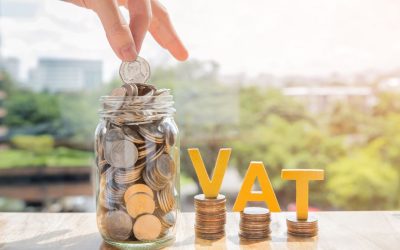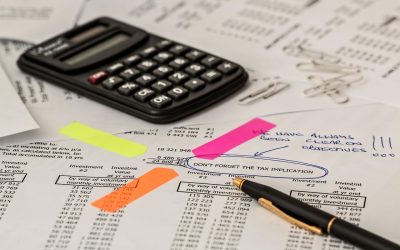If you have built, bought or leased a structure, and the contracts were signed after 29th October 2018, you might be eligible to claim tax relief. Claiming capital allowances for structures and buildings can improve your financial health by reducing your taxable profits.
In this article, we will explore what capital allowances are, guide you through the structures and building allowance (SBA) claiming process, and delve into what you can and can’t claim for through the SBA.
Capital allowances are an expenditure that individuals and businesses may be able to claim against taxable profit. You can claim capital allowances on items and assets purchased for use within your business that are essential to run it successfully.
In terms of capital allowances for structures and buildings, if your business built, bought or leased a structure after 29th October 2018, you may be able to claim Structures and Buildings Allowance (SBA). This allowance allows businesses to deduct a percentage of the expenses spent to construct or renovate non-residential structures and buildings from their taxable profits.
Structures and Buildings Allowance (SBA) is a form of tax relief introduced by the UK government in October 2018 that allows businesses to claim a deduction for the money spent during the construction, renovation, or conversion of non-residential structures and buildings. Between October 2018 and March 2020, the applicable rate was 2%. However, from April 2020 onwards, this rate has risen to 3%.
There are a number of different criteria that your building or structure needs to meet in order to be able to claim capital allowances. These include:
To be able to claim capital allowances against your structure or building, it needs to be used for a qualifying activity that is taxable in the UK. These include:
An allowance statement is a written statement that proves that you are eligible to claim capital allowances against your structure or building. If you’re the first person to use the structure, you must create this document before you can make a claim. For a pre-used structure, you have to get a copy of the allowance statement for a previous owner before you are able to make a claim.
The allowance statement must include:
The costs of any changes made to the structure of the building after you started using it can either be recorded on the original allowance statement, or on a new one that you create.
We’ve already talked about the criteria that you must meet in order to be eligible to claim for SBA, and what the qualifying activities are, but let’s explore what costs you can claim the allowance on!
You are only allowed to claim on any construction costs, including:
What you can claim varies depending on where you are in the property chain. For example:
If you were the company that built or renovated the structure, you are able to claim on the amount you spent for construction, even if you lease the building from another person.
If you have bought the structure unused from a developer, you are able to claim the Structures and Building allowance on the price you paid the developer, minus any items you can’t claim for. However, if you paid over the market value for a structure or its construction expenses, you’ll only be able to claim for the original market value.
If the structure has been sold by a developer more than once but you’re the first person to use it, you can claim on whichever is lower:
If you purchase a used structure from a developer, you can claim the SBA on the developer’s construction costs.
If you buy the structure unused from someone that isn’t a developer, after deducting items you can’t claim for, you can claim on whichever is lower:
If you buy a used structure from someone that isn’t a developer, you can claim the SBA on the same amount that the previous owners were entitled to claim.
Whilst there are a large amount of costs that SBA can be claimed on, there are a number of things that you cannot claim on, including:
As we’ve already mentioned, SBA can be claimed at 3% of your qualifying expenditure and can be claimed for 33.33 years. Unlike plant and machinery items, there is no annual investment allowance.
You have to claim your SBA on your tax return, and you must attach your allowance statement. You can start your claim either from the date that you started using the structure for a qualifying activity, or the date that you’re due to pay for the building or its construction – whichever is later.
If your expenses occur partway through an accounting period, you have two choices: either claim in the same year by doing time-apportionment, or start a full claim from the next accounting period.
If you sell or dispose of the structure, your allowances will stop. Make sure that you give a copy of the allowance statement so they can claim any remaining allowances. However, if your structure is demolished or sold to be used as something that doesn’t count as a qualifying activity, the claim will end.
When you get rid of the building that you have claimed the SBA on, you may have to pay more Capital Gains Tax or Corporation Tax. This is because you must add the total amount of Structures and Buildings Allowance you’ve claimed to your disposal receipts to calculate your capital gain or loss.
At Eureka, our team of Capital Allowances Consultants have over two decades of experience in helping business owners unlock thousands of pounds of hidden tax relief in their buildings and structures.
Browse our services or contact us today to discover how we can help you.
What are capital allowances?
What is Structures and Buildings Allowance?
What is the criteria to claim Structures and Buildings Allowance?
What counts as a qualifying activity for Structures and Buildings Allowance?
What is an allowance statement?
What can Structures and Buildings Allowance be claimed on?
What can you not claim Structures and Buildings Allowance on?
How to claim capital allowances for structures and buildings
What happens when the structure is sold?
How Eureka Capital Allowances can help



